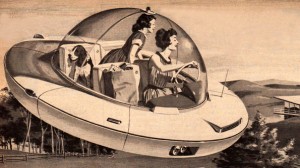Hope you enjoy the new Agapanthus video for the song SmuggyE off of the 2012 Smug album! This is one of the tunes that uses transcendental numbers and a little Mathematica for creative inspiration.

Hope you enjoy the new Agapanthus video for the song SmuggyE off of the 2012 Smug album! This is one of the tunes that uses transcendental numbers and a little Mathematica for creative inspiration.

On Thursday (Nov. 8, 2012) I gave a colloquium at Cal Poly, San Luis Obispo, with my wife, Prof. Jennifer Klay, on the status of the Higgs search at the LHC. It was a joint talk meant to summarize the recent discovery, by CMS and Atlas in July, of a Higgs-like particle with a mass around 125 GeV/c^2. We each had about 23 minutes: me the theory, Dr. Klay the experimental results. The audience was made primarily of undergraduates with a mix of professors and other attendees; almost none had any particle physics background. While constructing the talk, I had to resist the urge to try and summarize all of the detailed theoretical and mathematical machinery that goes with the Standard Model. This would have been rather ineffective. The point of a colloquium is to communicate ideas, not to plow people down and confuse them. Instead, I tried to remain true to the spirit of the colloquium and targeted the audience I knew would be present: physics major undergraduates who had taken their first course in modern physics. I felt that this was the simplest I could make the material while still building a case for the Higgs. It allowed me to draw from accessible analogies that were, although imperfect, basically physically responsible. At some point, I will post a more complete narrative of the talk. But, for now, I simply wanted to make the talk available for any interested parties (note: it is about 50MB, so be patient). To download the Standard Model Lagrangian I used in the talk, visit my old UC Davis site where you can find pdf and tex versions of it for your own use. If you are interested in investigating the hadron spectra I show in the talk, you can download my demonstration available in CDF format from the Wolfram Demonstration Project. Enjoy.
P.S. In the talk, I don’t give a photo credit for my 50s flying car (to represent the “guided tour”), which I got from vintage ad I believe to be in the public domain (e.g. you can get it here, although this isn’t where I downloaded it from). In the talk I did not give credit for the two Feynman diagrams (1 and 2) for the “Golden Channels,” which I got from wikipedia. The photo of John Ellis is by Josh Thompson and was obtained from Flickr.
Ever wonder what π or e or other number sequences sound like when mapped into some musical sound space? I’ve written a little Mathematica Notebook, downloadable here, that lets you tinker with these possibilities with a simple interface. You can then save your work to a MIDI file which can then be loaded into your favorite music software like CuBase, Logic, Pro Tools, or even Garage Band. I would offer the full notebook as a free CDF file, but Wolfram’s current CDF format does not support writing out to files yet. However, below is the basic interface you can tinker with on this web page. You will need the free Mathematica CDF plugin installed (or a copy of Mathematica 8).
On my latest album, Smug, I use this software to create two pieces based on the trancendental number e and π. Descriptions below.
Smuggy E:
The first riff uses the first 15 digits of the transcendental number e=2.71828182845904 (0=C, 1=C#, 2=D etc.) in 15/16 time it then modulates so 0=F, 1=F#, 2=G
the interlude riff is the speed of light in vacuum c=299792458.0 m/s with (0=C, 1=C#, 2=D etc.) in 6/4. Yes, I cheated a little adding the “.0” on the end of c since, in m/s, c is defined as an exact integer.
Smuggy π:
Similar to above, uses the first 10 digits of pi and the speed of light with the mapping (0=C, 1=C#, 2=D etc.).
These are just a few of the literally infinite possibilities one can create using amusing number mappings. Let me know if you create (or have created) any of your own. I’d be interested to hear!
Decided to enter Wolfram’s Mathematica One-Liner Competition 2012: “What can you do with one line of code?” That is, in under 140 characters (making it tweetable). Why, a Particle Zoo Calliope, of course! My entry (only slightly modified from that submitted):
W00t! Received an Honorable Mention! (the competition was fierce, lots of good one-liners). Give it a try below. You will need the free Mathematica CDF plugin installed. A figure will be generated. It is a musical instrument. Click on different locations on the figure to play different intervals. The first click is sometimes a bit awkward/slow, but after that it should play in real time.
Description:
A sector plot is generated based on the spin of all the known elementary particles (quarks, leptons, and gauge bosons) and the hadronic bound states (bayrons and mesons). The length of the tine on the sector plot is proportional to the particle’s intrinsic spin. There are around 1000 particles in the database. When you click on one of the sectors, representing a particle, two tones are played based on the spin and the mass of that particle. The mapping from values to notes is arbitrary, but selected to be “listenable.” I take two times the particle’s spin as one note and the integer part of the particle’s mass to the 0.3 as the second (this was selected by trial and error to give a reasonable range of tones for the full particle mass spectrum). A value of “0” is considered middle C and each integer above and below is a half-step.